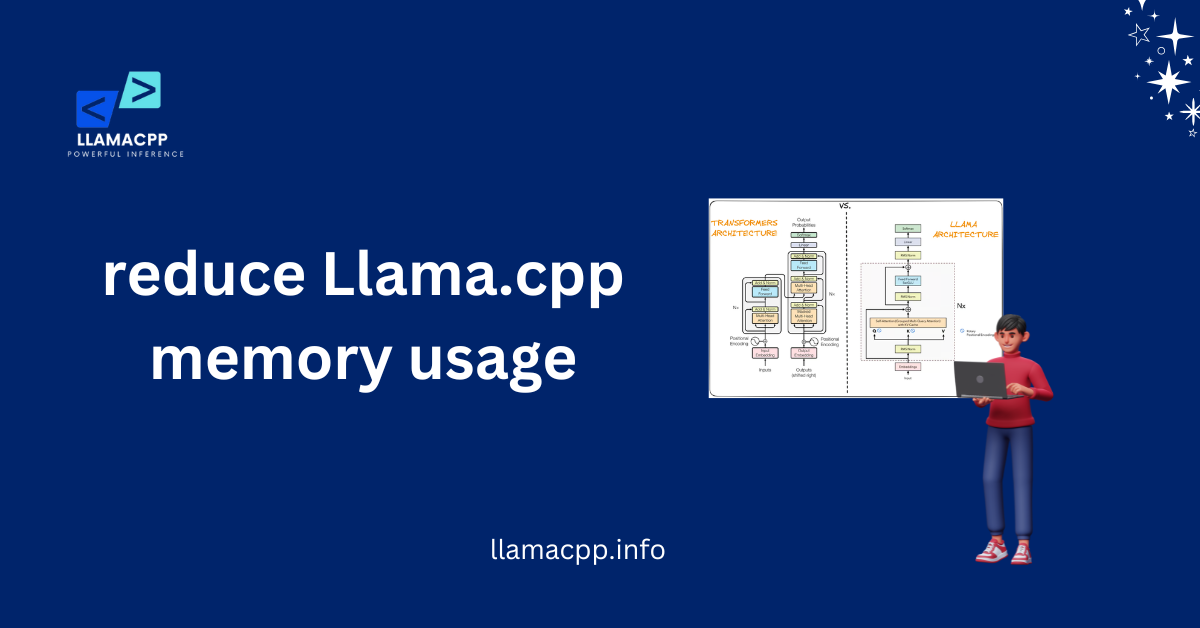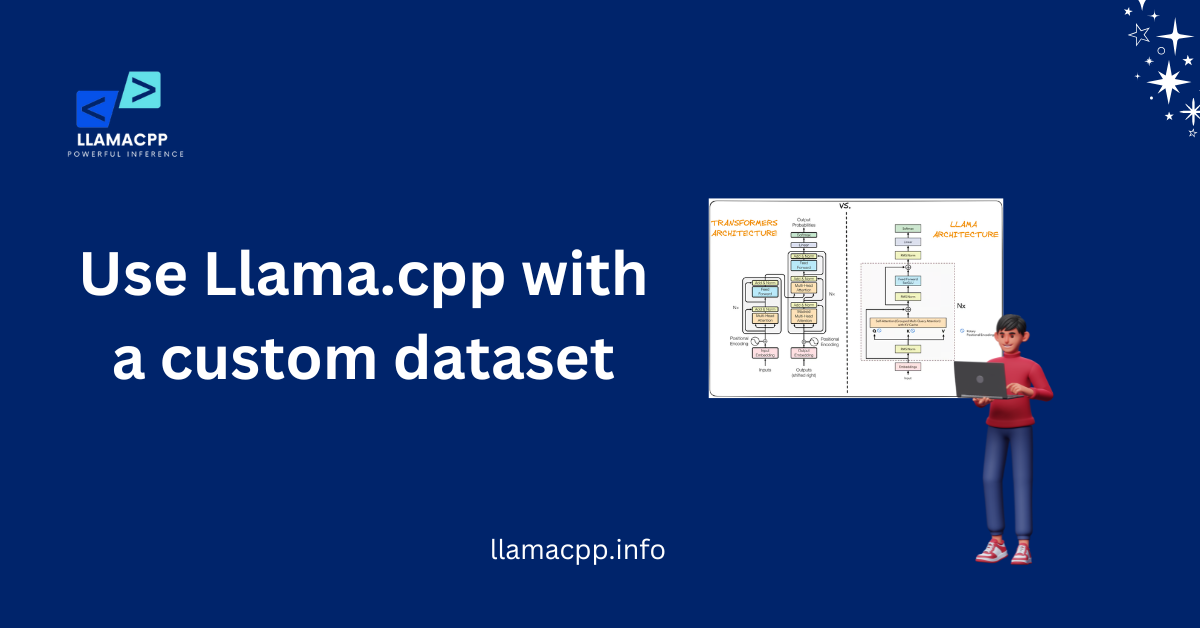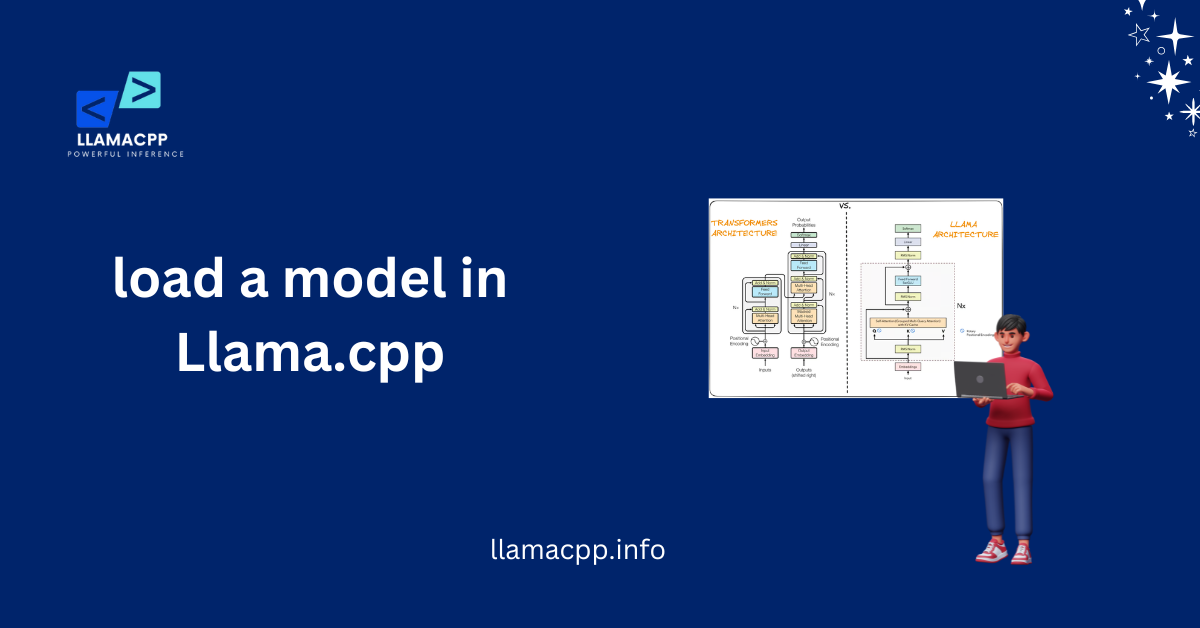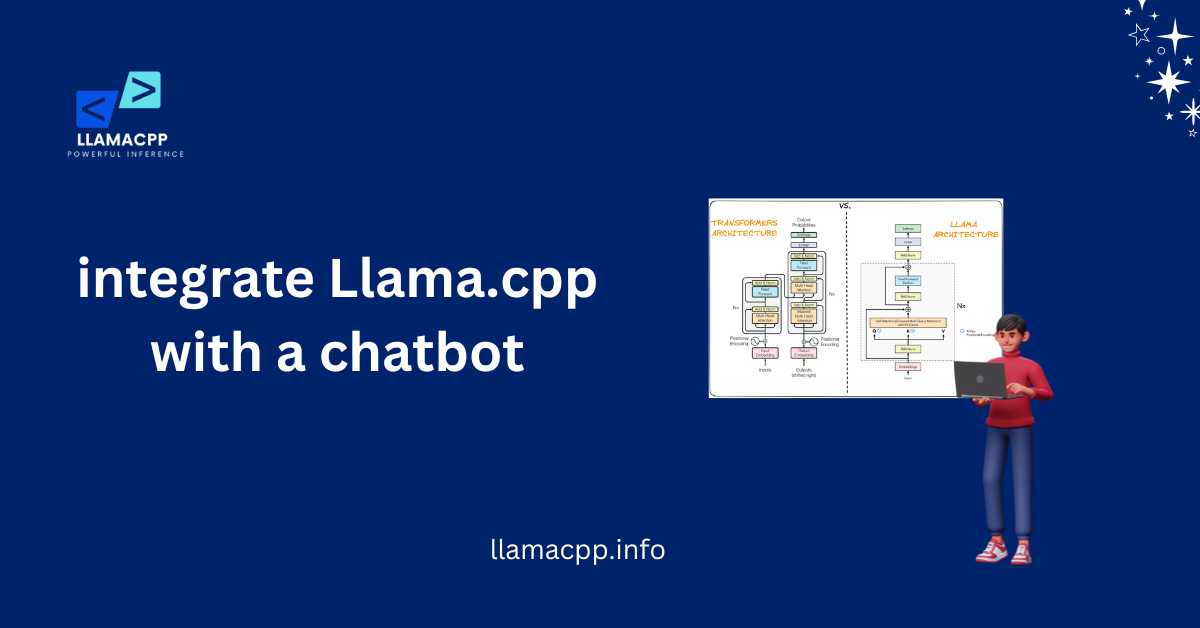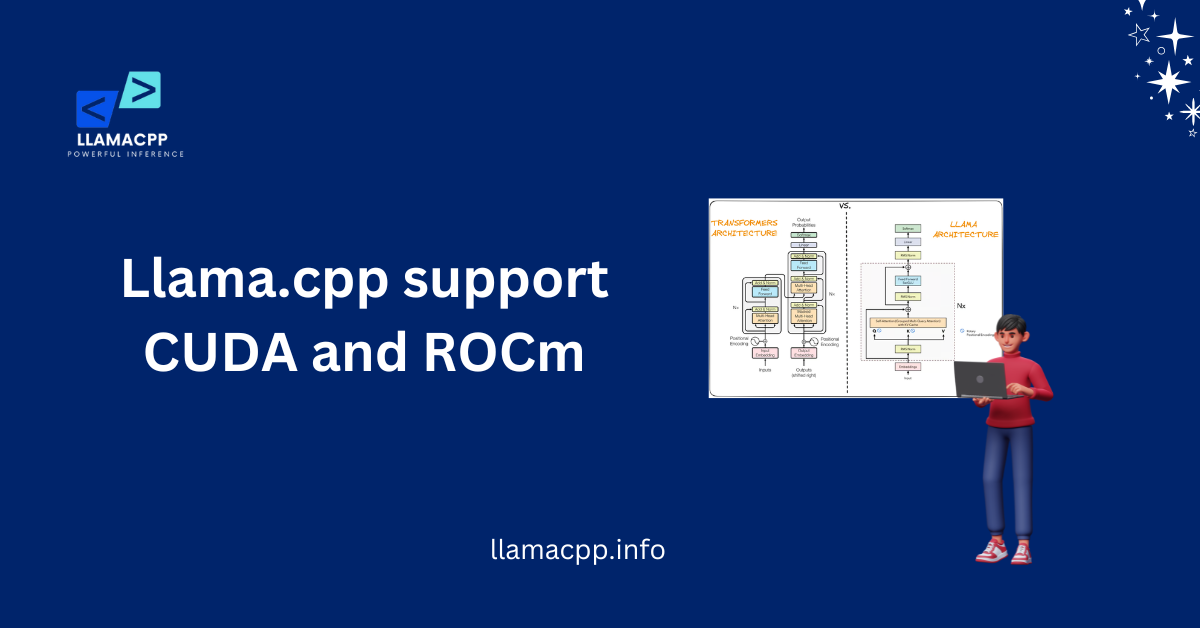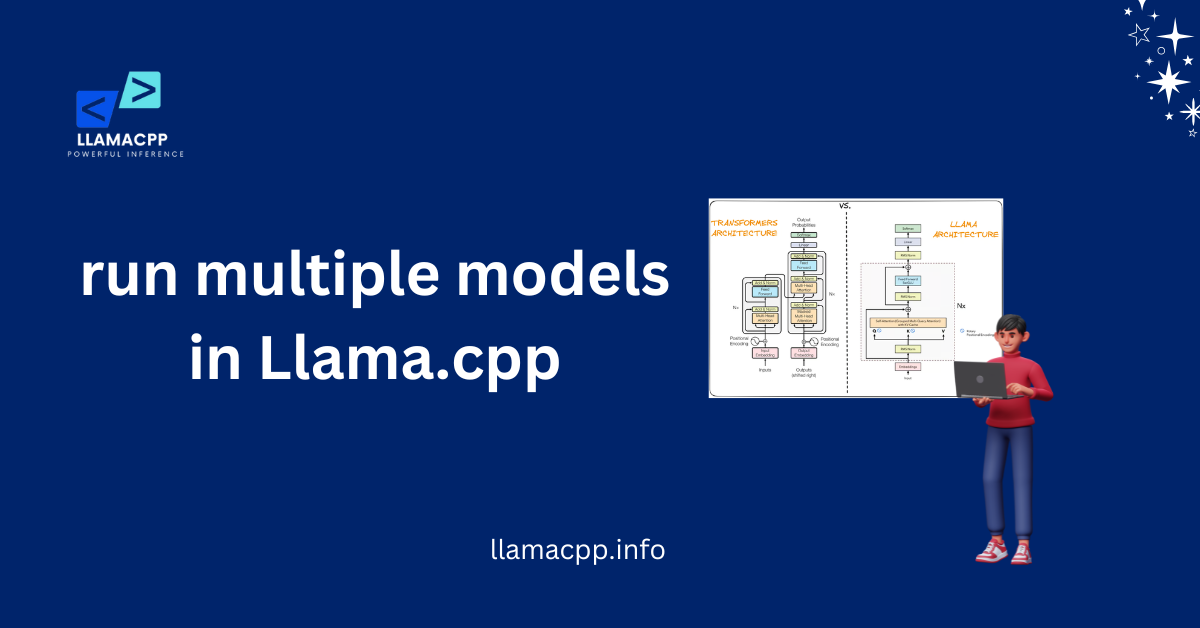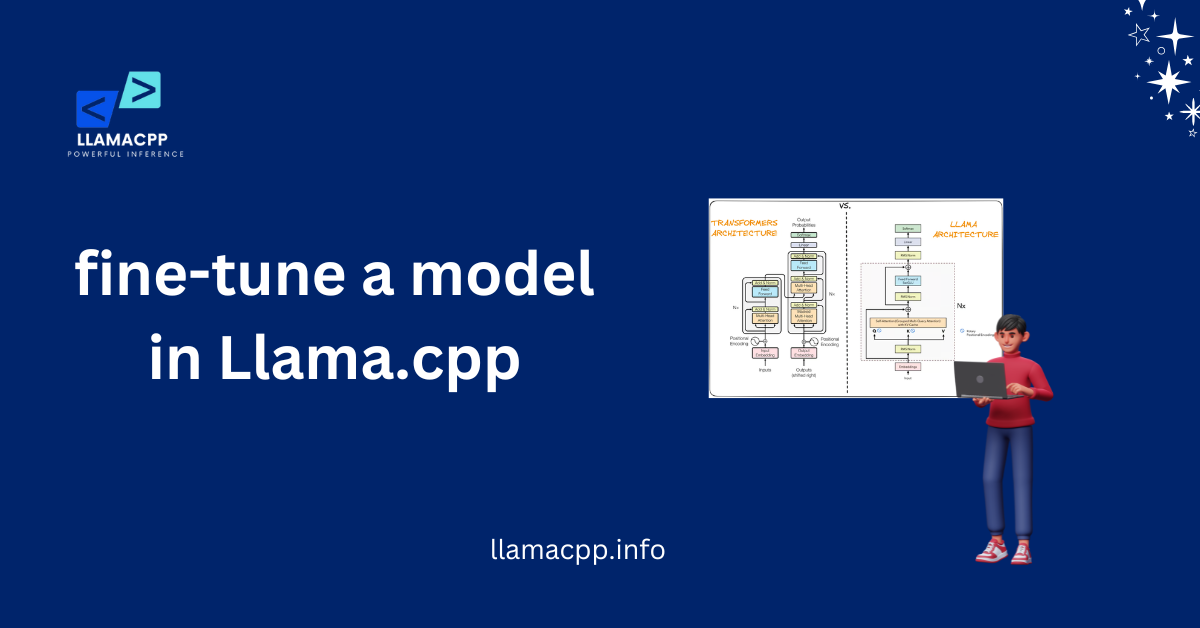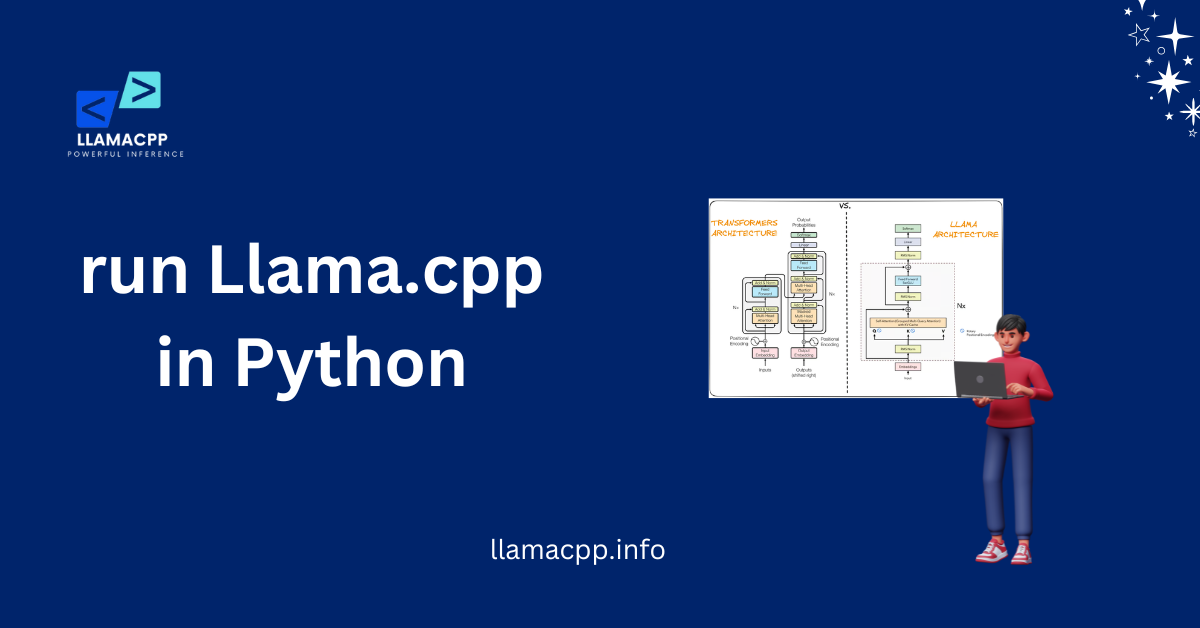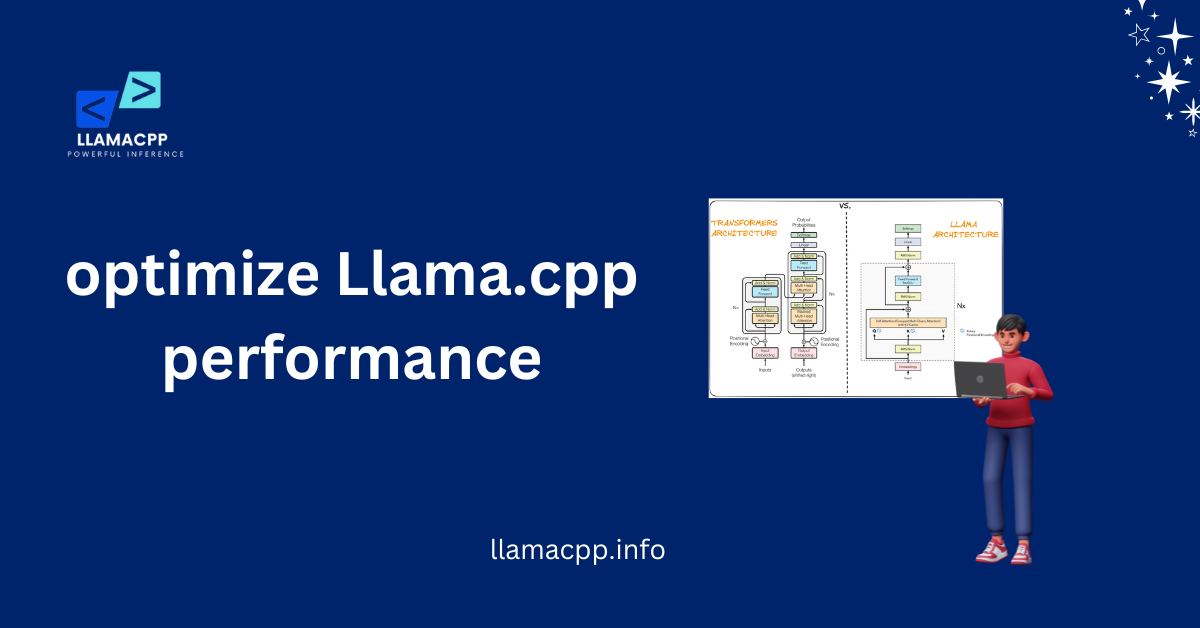Table of Contents
ToggleIntroduction
Reduce Llama.cpp memory usage to make it run faster and better. Large models take up a lot of room, slowing down your system. If memory use goes too high, your device may lag or even crash. That’s frustrating, right? But don’t worry! Simple changes can fix this. Better memory management lets you keep performance high without having to buy new hardware.
Why does this matter? High memory use drains power and reduces productivity. In addition, it makes Llama.cpp less valuable. The good news is that you can optimize it without much work. You can save memory, speed things up, and have a smooth experience if you follow the proper steps.
Why Optimize Memory Usage?
Efficient memory use is key to keeping your system fast. Your device might not work as fast if Llama.cpp takes up too much space. It might take longer, crash, or freeze because of this. Nobody likes a slow system. That’s why you need to reduce Llama.cpp memory usage for better performance. A setup that is well tuned works smoothly and reacts faster.
Multitasking is also more effortless when you use less memory. You can do more than one thing at once if your system isn’t too busy. This helps AI users and coders who work on big projects. By taking the proper steps, you can reduce Llama.cpp memory usage without losing performance. Let’s look at its perks in more depth.
Boosts Speed and Efficiency
- Optimize code execution by using GPU acceleration and parallel processing wherever possible.
- Reduce unnecessary computations by limiting model size, context length, or batch size based on requirements.
- Implement caching and memory management strategies to prevent repeated data loading.
- Use lightweight libraries and frameworks that are designed for faster inference.
- Regularly update software and drivers to take advantage of the latest performance improvements.
Stops system overloAllows More Tasks at Once
More things can be done on a machine with better memory management when you reduce Llama.cpp memory usage, you free up space for other apps. You can do more than one thing at once without slowing down.
If memory is well-managed, you can load a model in Llama.cpp alongside other tools. This helps you work faster and better, whether you’re coding, testing, or studying. Lower memory usage improves workflow.
Techniques for Model Quantization
- Reduce model size and memory usage by converting weights from high precision (FP32) to lower-precision formats like FP16 or INT8.
- Apply dynamic quantization during runtime to optimize inference speed without retraining the model.
- Use static quantization by calibrating the model with sample data for more consistent performance.
- Experiment with mixed precision quantization to balance accuracy and computational efficiency.
- Leverage framework specific quantization tools to automate and simplify the optimization process.
Integer Quantization
With integer quantization, big numbers are changed to smaller ones. It gets lighter and goes faster this way. It makes Llama.cpp use less memory while keeping accuracy high. A lot of people use this method because it’s fast and works well.
Because smaller numbers take up less room, they can be processed more quickly. This makes it easy to run Llama.cpp on devices with little memory. It also lowers power consumption, making the system more efficient.
Pruning for weight
Weight trimming removes unnecessary parts of the model. By keeping only the most useful weights, Llama.cpp uses less memory. A lighter model goes faster and needs fewer resources.
Models that have been pruned still work well because they keep the most important data. When extra parts are cut out, memory use decreases while speed increases. This method is great for people who want to improve their work.
Accuracy at Low Bits
When you use low-bit precision, you store data on fewer bits. This speeds things up and makes the model trimmer. This way of lowering Llama.cpp memory use keeps things running smoothly without sacrificing too much accuracy.
Using fewer bits means the model processes data faster. It also helps run Llama.cpp on machines with limited resources. This simple method works well to improve memory management.
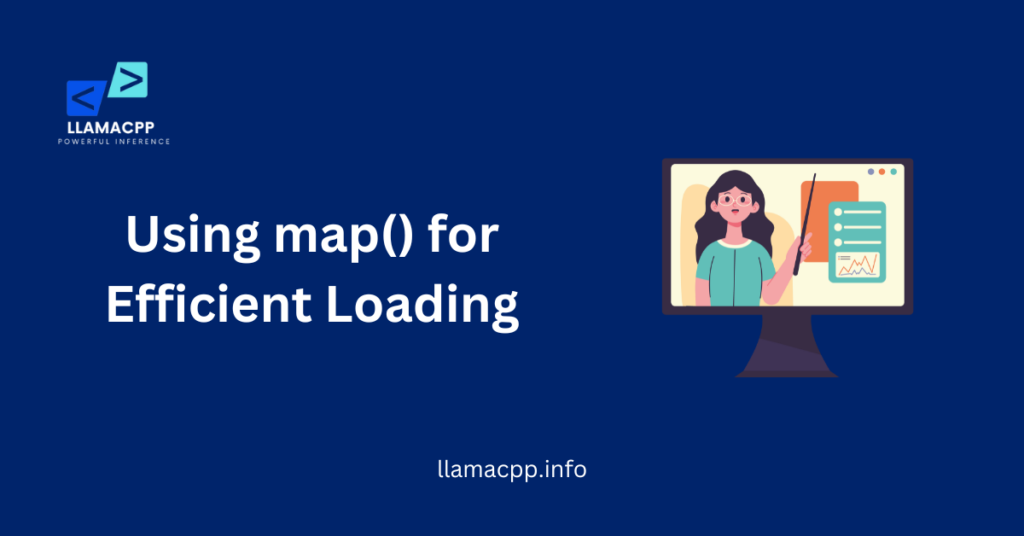
Using map() for Efficient Loading
Memory mapped files (map) help reduce Llama.cpp memory usage by loading data quickly. The map doesn’t load everything into RAM at once; it only loads the parts that are needed. This keeps the system from running slowly and stops memory from getting too full. It’s a great way to handle large models without using too much memory.
When you need data, the map reads it straight from the disk. This cuts down on unnecessary memory use and speeds up processes. map is a valuable tool that can help you lower the amount of memory used by Llama.cpp. It ensures that loading goes smoothly and boosts overall performance.
Gets data when you need it
- Implement lazy loading techniques to fetch data only when it is required, reducing memory usage.
- Use generators or iterators to handle large datasets efficiently without loading everything at once.
- Optimize data pipelines so that the model receives inputs on demand, improving performance.
- Monitor system resources to ensure data fetching does not cause bottlenecks or slowdowns.
- Combine on demand loading with caching strategies to speed up repeated access to frequently used data.
Reduces RAM Usage
- Use memory efficient data structures and avoid storing unnecessary intermediate results.
- Implement lazy loading or on-demand data fetching to load only what is needed.
- Apply model quantization (FP16/INT8) to decrease memory requirements without sacrificing accuracy.
- Clear cache and unused variables regularly during program execution.
- Optimize batch size and context length to balance performance and RAM consumption.
Model execution is sped up.
Model execution is faster when a map is used because it lowers the memory load. The system works with data more quickly when you reduce the amount of memory used by Llama.cpp. This speeds up responses and makes things run more smoothly overall.
Map is better at managing memory, so Llama.cpp runs more smoothly. You don’t need high-end hardware to get better results, so it is a good way to improve AI models.
Lack of Rank Adaptation (LoRA)
- LoRA enables efficient fine tuning by updating only low rank matrices instead of all model weights.
- Reduces memory and computation requirements during training while maintaining performance.
- Allows selective layer adaptation, focusing on the most impactful parts of the model.
- Facilitates faster experimentation with different datasets and tasks.
- Compatible with both CPU and GPU setups, providing flexible model optimization options.
Fewer parameter updates are made.
LoRA only changes the model’s most important parameters and not the whole thing. This helps reduce Llama.cpp memory usage while keeping performance stable. It ensures the model stays efficient without storing unnecessary data.
By focusing on key areas, LoRA lowers the memory needed for training. This means that fine-tuning can be done faster, and systems don’t need to be as powerful, which makes AI models more straightforward to use.
Lessens the load on computers:
Training a full model takes a lot of memory and processing power. LoRA helps reduce Llama.cpp memory usage by cutting down the computational burden. The system works better without slowing down for no reason.
Models can be taught on standard hardware with a lower computational load. LoRA is the best option because it improves AI without lowering quality.
Keeps the model accurate
LoRA stays very accurate even when it uses less memory. This means that reduce Llama.cpp memory usage efforts do not affect performance. The model still gives accurate results without using more memory.
LoRA fine-tunes well by keeping the essential parameters the same. This makes it a valuable method for optimizing AI models while saving system resources.
A Mix of Precise Training Techniques
- Combine high precision (FP32) and low precision (FP16/INT8) training to balance accuracy and efficiency.
- Use selective layer training to focus on critical parts of the model while keeping others frozen.
- Apply gradient accumulation to maintain stable learning even with limited GPU memory.
- Integrate regularization methods to prevent overfitting while maintaining precise predictions.
- Monitor training metrics closely to adjust precision and learning rates for optimal results.
Lowers the level of accuracy for faster computation
Less accuracy means that the data sizes are smaller. This helps reduce Llamas.cpp memory usage because the system stores and processes less data at a time. The model works faster without losing any of its accuracy.
AI models can learn and figure out results quickly because mixed precision cuts down on work. This makes things run faster without having to buy expensive new gear.
Keeps GPU memory safe
When float16 is used instead of float32, half as much memory is used. This helps reduce Llama.cpp memory usage by freeing up GPU resources. It doesn’t run out of memory when working with bigger models.
If they use less memory, models can fit into VRAM, which is limited. This makes AI work fast, even on GPUs in the middle range.
Maintains Accuracy with Scaling
Accuracy stays the same even when precision is lower. Loss scaling and other techniques prevent errors, so efforts to reduce Llama.cpp memory usage doesn’t change the model’s results.
This balance between memory savings and accuracy makes mixed precision a great way to improve AI models. It makes training quick and easy while keeping accurate predictions.
Checkpointing with Gradients
- Save intermediate model states during training to prevent data loss in case of interruptions.
- Use gradient checkpointing to reduce memory usage by storing only selected activations and recomputing others as needed.
- Balance between computation and memory to allow training of larger models on limited hardware.
- Monitor training performance to ensure checkpointing does not significantly slow down iterations.
- Combine with optimized batch sizes and precision settings for maximum efficiency.
Fewer activations are stored.
Gradient Checkpointing only saves the most important activations instead of all of them. This lowers the amount of storage needed, which makes Llama.cpp use less memory. The model recomputes missing activations when required.
This method ensures that memory is used effectively without hindering learning. It also lets people with few resources train on bigger models.
Lessens the load on GPU memory
Since fewer activations are saved, less GPU memory is used. This helps Llama.cpp use less memory, so models can be trained on GPUs that aren’t as powerful. The system works well and doesn’t run out of memory.
When the GPU isn’t working as hard, deep learning models can perform more complicated tasks without having to buy expensive hardware.
Balances Memory and Speed
Level of Checkpointing saves memory and speeds up computations at the same time. Recomputation saves memory but takes a little more time to do. However, it still helps reduce Llama.cpp memory usage successfully.
Because of this trade-off, models can learn from more enormous datasets without crashing. This is a great way to improve AI models while using little memory.
Managing the memory on the CPU and GPU
- Monitor CPU and GPU memory usage regularly to prevent bottlenecks during model execution.
- Use memory efficient data structures and batching techniques to reduce unnecessary allocation.
- Offload intermediate computations to GPU memory when possible to speed up processing.
- Clear cache and unused variables in your code to free up memory dynamically.
- Optimize model size and precision (e.g., FP16 or INT8) to minimize memory footprint without losing accuracy.
Putting tasks on the CPU
GPUs process jobs quickly but have limited memory. Memory quickly runs out if all calculations are done on the GPU. Offloading some processes to the CPU helps reduce Llama.cpp memory usage by freeing up space for more critical GPU tasks.
Deep learning models can handle big datasets without slowing down because they divide work between the CPU and GPU. This method avoids memory bottlenecks and improves efficiency.
Improving how GPUs use their memory
- Allocate memory efficiently by using batch processing and minimizing unnecessary allocations.
- Apply mixed precision training (FP16/BF16) to reduce memory usage while maintaining performance.
- Use memory profiling tools to identify and fix GPU memory bottlenecks.
- Offload less critical computations to CPU memory to free up GPU resources.
- Clear GPU cache and unused tensors regularly to prevent memory leaks and slowdowns.
Using Pagers for Big Models
- Implement paging techniques to load only portions of large models into memory at a time.
- Use memory mapped files to handle model weights efficiently without exceeding RAM or GPU limits.
- Split models into smaller segments to allow processing on limited hardware.
- Monitor system performance to adjust paging strategy for optimal speed and resource usage.
- Combine paging with batching and on-demand loading to maintain smooth inference for very large models.
Conclusion
The best way to reduce Llama.cpp memory usage and ensuring AI runs smoothly is to manage memory well. Techniques like quantization, mixed precision training, and gradient checkpointing help lower memory consumption without hurting accuracy. By making the best use of CPU and GPU, models can run on a broader range of hardware.
A well-balanced memory strategy avoids crashes, speeds up processing, and improves overall system efficiency. Implementing these methods will help reduce Llama.cpp memory usage, making AI models more accessible and cost-effective for everyone.
FAQs
1. Why is it important to lower the amount of memory used by Llama.cpp?
Cutting down on memory use helps the model run smoothly without crashing or slowing down. It also makes Llama.cpp work well on machines that don’t have a lot of resources.
2. How does quantization help Llama? Does CPP use less memory?
Quantization lowers the accuracy of model weights, keeping efficiency high while using less memory. It also makes models run faster while using less power.
3. Is it possible to use Llama.cpp on a low-end device?
You can run Llama.cpp quickly on low-end hardware if you use memory optimization methods like mixed precision training, paging, and CPU offloading.
4. How does the GPU help lower the amount of memory used by Llama.cpp?
GPUs speed up work, but they can only hold a certain amount of data. Optimizing how the GPU is used and giving tasks to the CPU helps keep memory use in check and stops slowdowns.
5. Does cutting down on memory use change how accurate the model is?
Some methods, like quantization, might have a negligible effect on accuracy. Other methods, like gradient checkpointing and mixed precision training, help keep speed high while saving memory.

